Discover 12 stunning pink perennials that return yearly! Learn care tips, design ideas, and my personal favorites from 10+ years of gardening experience.

As a gardener with over a decade of experience, I’ve learned that perennials are the backbone of a vibrant, low-maintenance garden. There’s something magical about planting once and watching flowers return year after year—especially when they’re dressed in soft blush, hot magenta, or romantic rose hues. Today, I’m sharing my favorite 12 pink perennials that thrive across USDA zones, require minimal fuss, and deliver show-stopping color. Let’s dig in!
Why Choose Pink Perennials?
Pink isn’t just a color—it’s a mood. From calming pastels to bold fuchsias, pink perennials add warmth, contrast, and a touch of whimsy to gardens. They’re also versatile:
- Pollinator magnets: Bees and butterflies adore pink blooms like coneflowers and phlox.
- Design flexibility: Pair with purple, white, or blue flowers for striking combos.
- Year-round interest: Many offer evergreen foliage or seed heads for winter texture.
My 12 Favorite Pink Perennials for Reliable Blooms
1. Dianthus (‘Pink Kisses’)
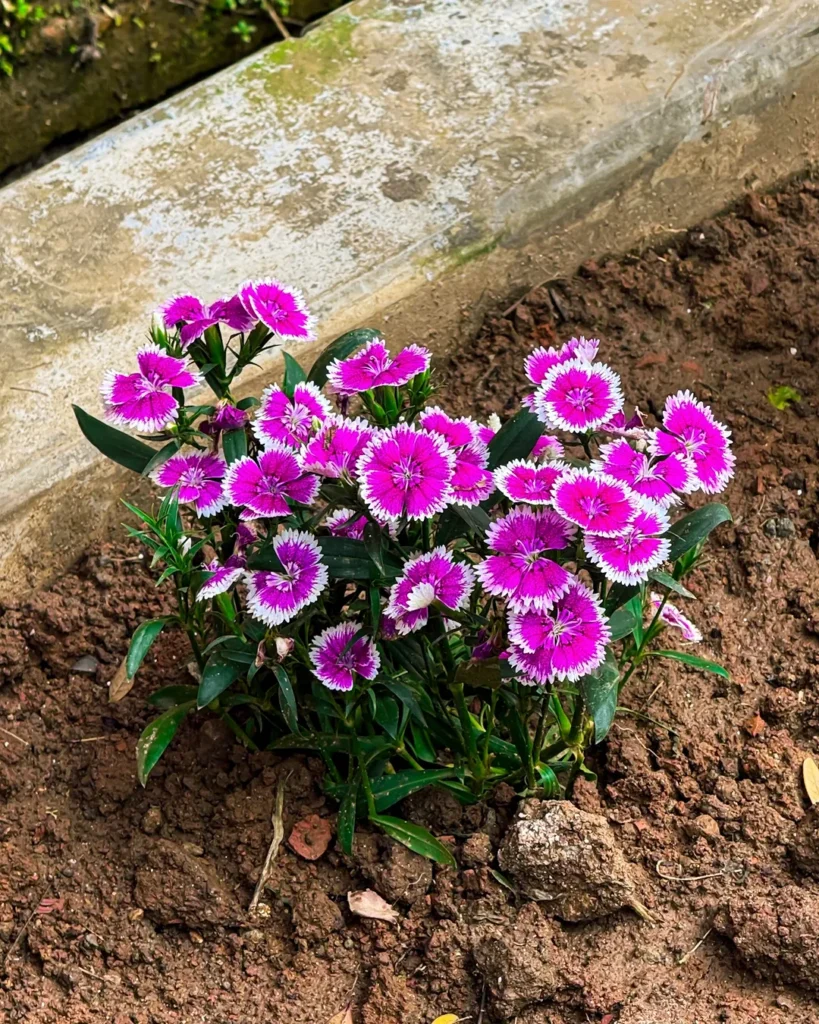
Botanical Name: Dianthus spp.
Zones: 3-9 | Sun: Full | Soil: Well-draining, slightly alkaline
Bloom Time: Late spring to early fall
I’ve grown Dianthus for years, and ‘Pink Kisses’ never disappoints. Its frilly, carnation-like flowers smell like cloves and bloom relentlessly. Pro tip: Deadhead spent flowers to encourage reblooming. For more full-sun picks, check out my guide to low-maintenance perennials.
2. Astilbe (‘Bridal Veil’)
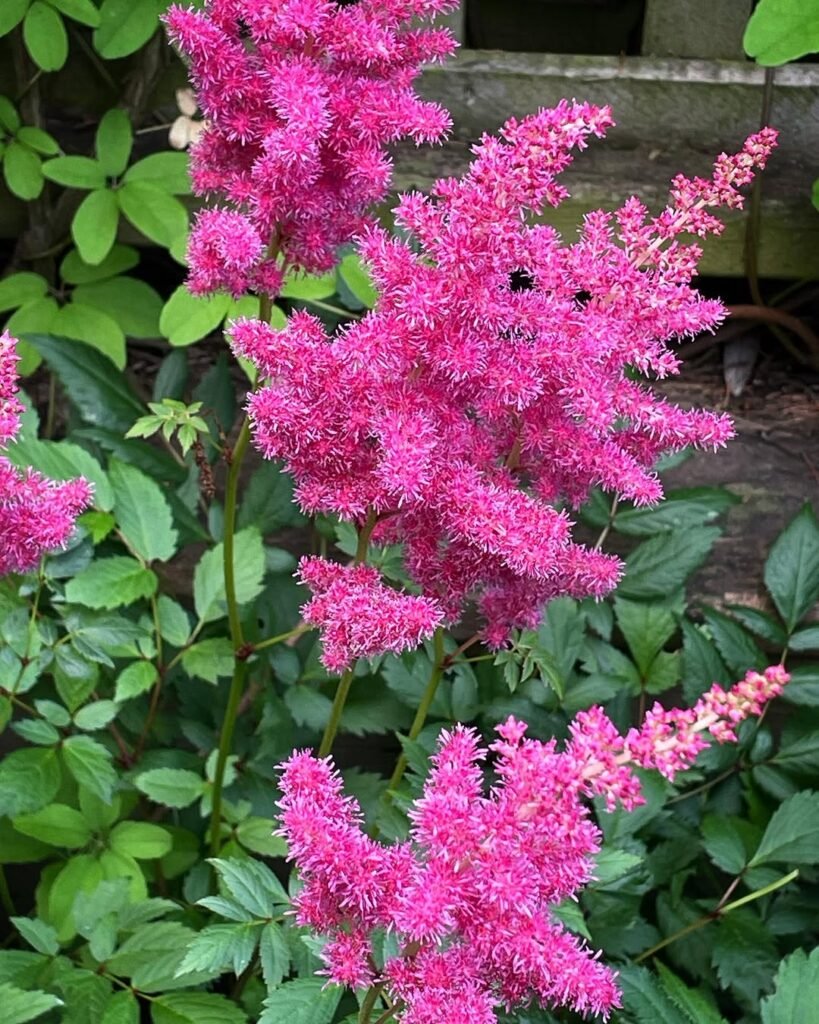
Botanical Name: Astilbe spp.
Zones: 4-8 | Sun: Part shade | Soil: Moist, rich
Bloom Time: Early to midsummer
Astilbe’s feathery plumes light up shady corners. ‘Bridal Veil’ boasts creamy pink spikes that pair beautifully with hostas. Keep soil consistently moist—I mulch mine with compost to retain water.
3. Garden Phlox (‘David’)

Botanical Name: Phlox paniculata
Zones: 4-8 | Sun: Full to part sun | Soil: Fertile, well-draining
Bloom Time: Mid to late summer
‘David’ is a mildew-resistant variety with clusters of sweet-scented pink flowers. I plant mine near seating areas to enjoy their fragrance. Avoid overhead watering to prevent disease.
4. Peony (‘Sarah Bernhardt’)

Botanical Name: Paeonia lactiflora
Zones: 3-8 | Sun: Full | Soil: Rich, well-draining
Bloom Time: Late spring
A classic! Their massive blooms need support—I use tomato cages early in the season. Check out my peony staking guide for tips.
5. Bleeding Heart (Dicentra spectabilis)
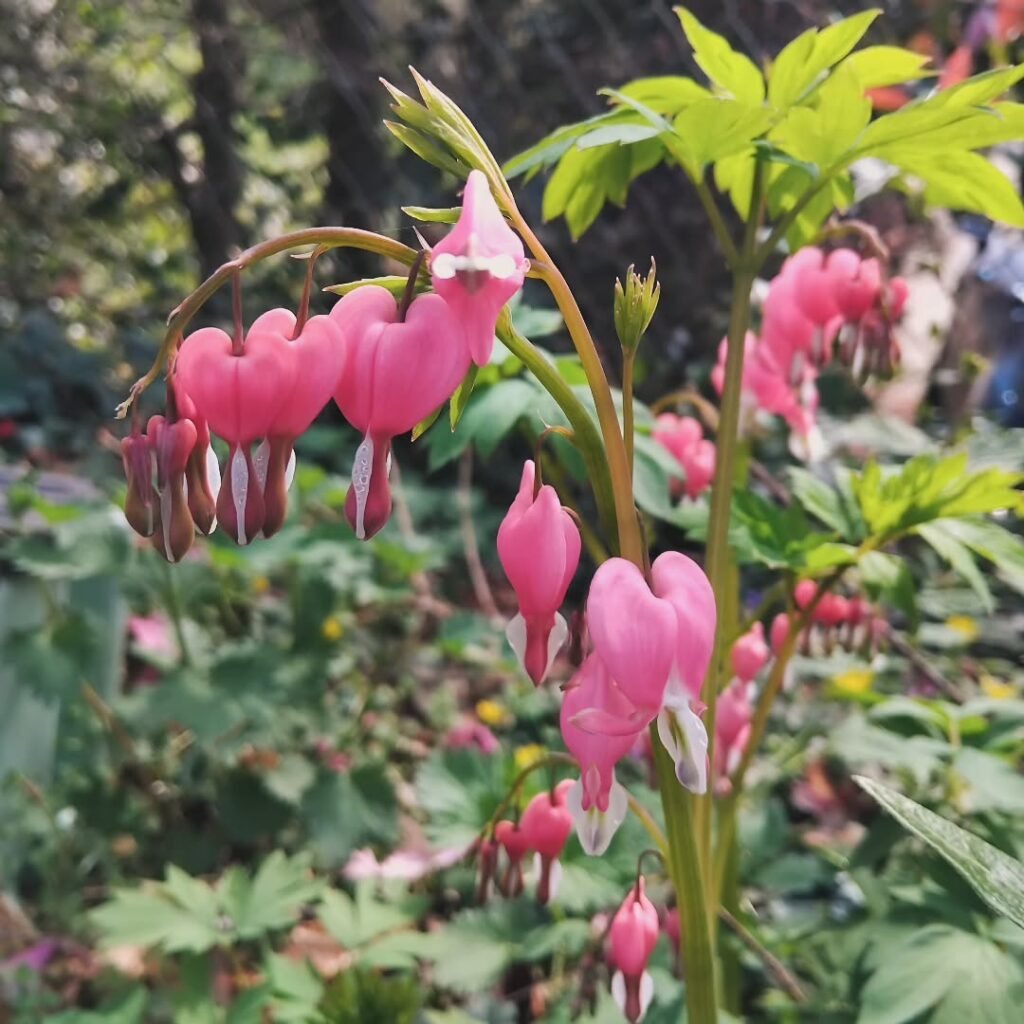
Botanical Name: Dicentra spectabilis
Zones: 3-9 | Sun: Part to full shade | Soil: Moist, humus-rich
Bloom Time: Spring
Its heart-shaped flowers vanish by summer, so I underplant with ferns for continued interest.
6. Coneflower (‘Pink Double Delight’)

Botanical Name: Echinacea purpurea
Zones: 3-8 | Sun: Full | Soil: Tolerates drought
Bloom Time: Summer to fall
A pollinator favorite! I leave seed heads standing for winter birds. Learn more about attracting bees (external link).
7. Sedum (‘Autumn Joy’)

Botanical Name: Hylotelephium telephium
Zones: 3-9 | Sun: Full | Soil: Poor to average
Bloom Time: Late summer to frost
Starts pink, ages to copper. I use it in my xeriscape garden—zero watering needed!
8. Lamium (‘Pink Chablis’)

Botanical Name: Lamium maculatum
Zones: 3-8 | Sun: Shade | Soil: Moist, well-draining
Bloom Time: Spring to summer
Silver-variegated foliage brightens dark corners. Perfect under my oak tree where grass won’t grow.
9. Coral Bells (‘Berry Smoothie’)
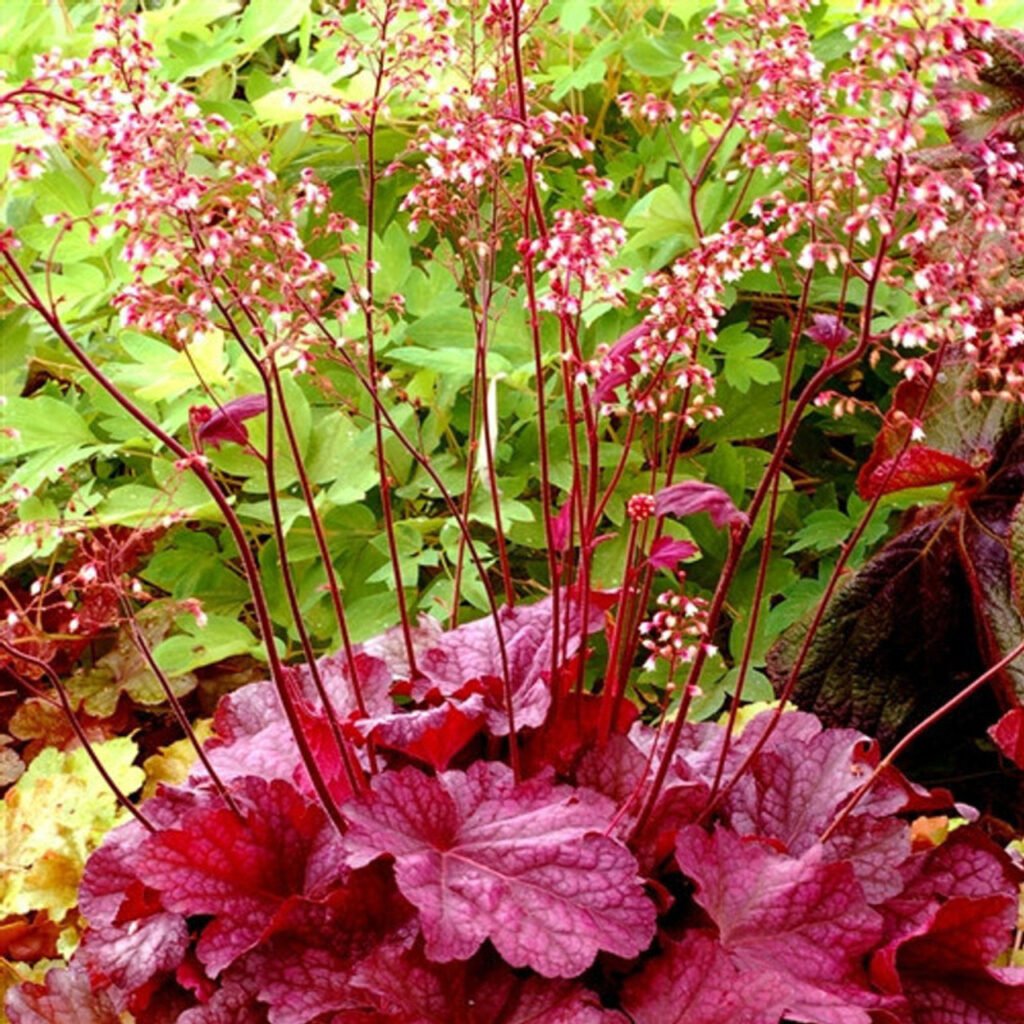
Botanical Name: Heuchera spp.
Zones: 4-9 | Sun: Part sun | Soil: Well-draining
Bloom Time: Late spring to early summer
The raspberry-toned leaves shine year-round. I mix them with blue fescue for texture.
10. Bee Balm (‘Pink Lace’)

Botanical Name: Monarda didyma
Zones: 4-9 | Sun: Full to part sun | Soil: Moist
Bloom Time: Summer
Hummingbirds adore this! I grow it near my kitchen window for easy viewing.
11. Creeping Phlox (‘Candy Stripe’)
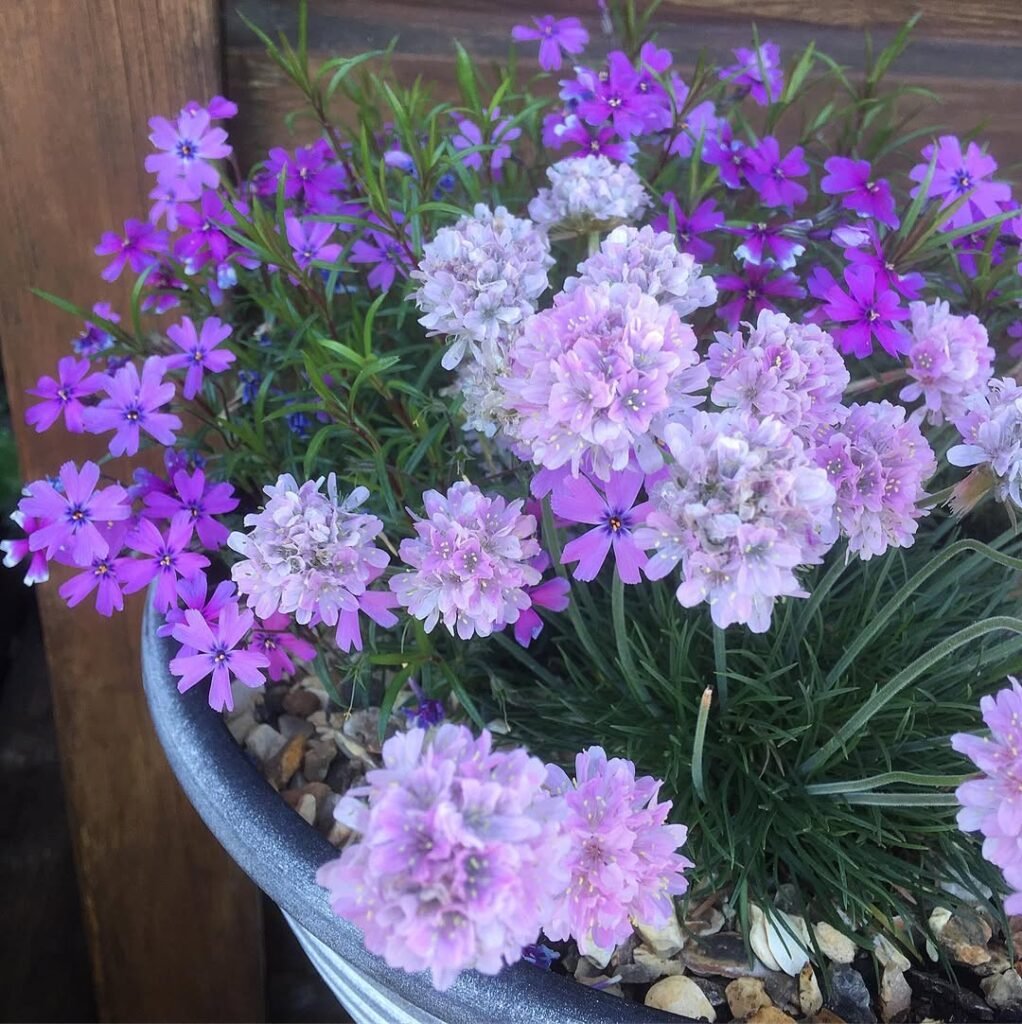
Botanical Name: Phlox subulata
Zones: 3-9 | Sun: Full | Soil: Sandy, gritty
Bloom Time: Early spring
A cascading waterfall of pink! I drape it over retaining walls. Pro tip: Trim after blooming to keep it dense.
12. Geranium (‘Rozanne’)

Botanical Name: Geranium hybrid
Zones: 5-8 | Sun: Full to part sun | Soil: Average
Bloom Time: June to frost
The MVP of long bloomers! I pair it with yellow daylilies for a cheerful combo.
Designing With Pink Perennials: Pro Tips
- Layer heights: Place tall varieties like Monarda (Bee Balm) at the back, low-growers like Creeping Phlox up front.
- Seasonal rotation: Combine early bloomers (e.g., Bleeding Heart) with late stars (e.g., Sedum ‘Autumn Joy’).
- Foliage matters: Silver-leaved plants like Lamb’s Ear make pink blooms pop.
For more ideas, explore my post on creating a cottage garden.
FAQs About Pink Perennials
Do pink perennials grow in shade?
Yes! Try Astilbe, Bleeding Heart, or Heuchera (Coral Bells) for shaded areas.
What’s the longest-blooming pink perennial?
Geranium ‘Rozanne’ (Cranesbill) flowers from June to frost in zones 5-8.
How do I keep pink flowers from fading?
Mulch to retain moisture, and avoid harsh afternoon sun for delicate varieties like Peonies.
Final Thoughts
Whether you’re crafting a pastel paradise or a bold statement border, these pink perennials offer reliability and charm. My top advice? Start with your USDA zone and sunlight conditions—then let these hardy beauties do the rest.
Got questions? Drop me a comment below or visit USA Garden Hub for more gardening guides!


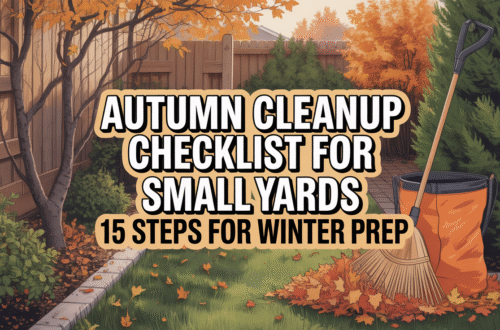

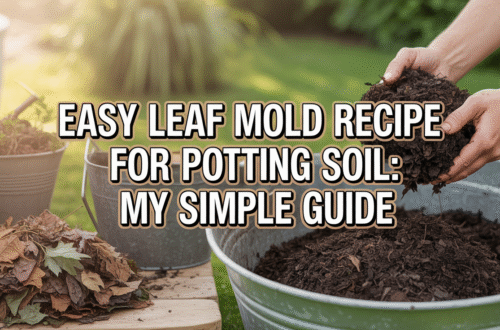
One comment on “12 Pink Perennials That Bloom Year After Year (My Top Picks!)”